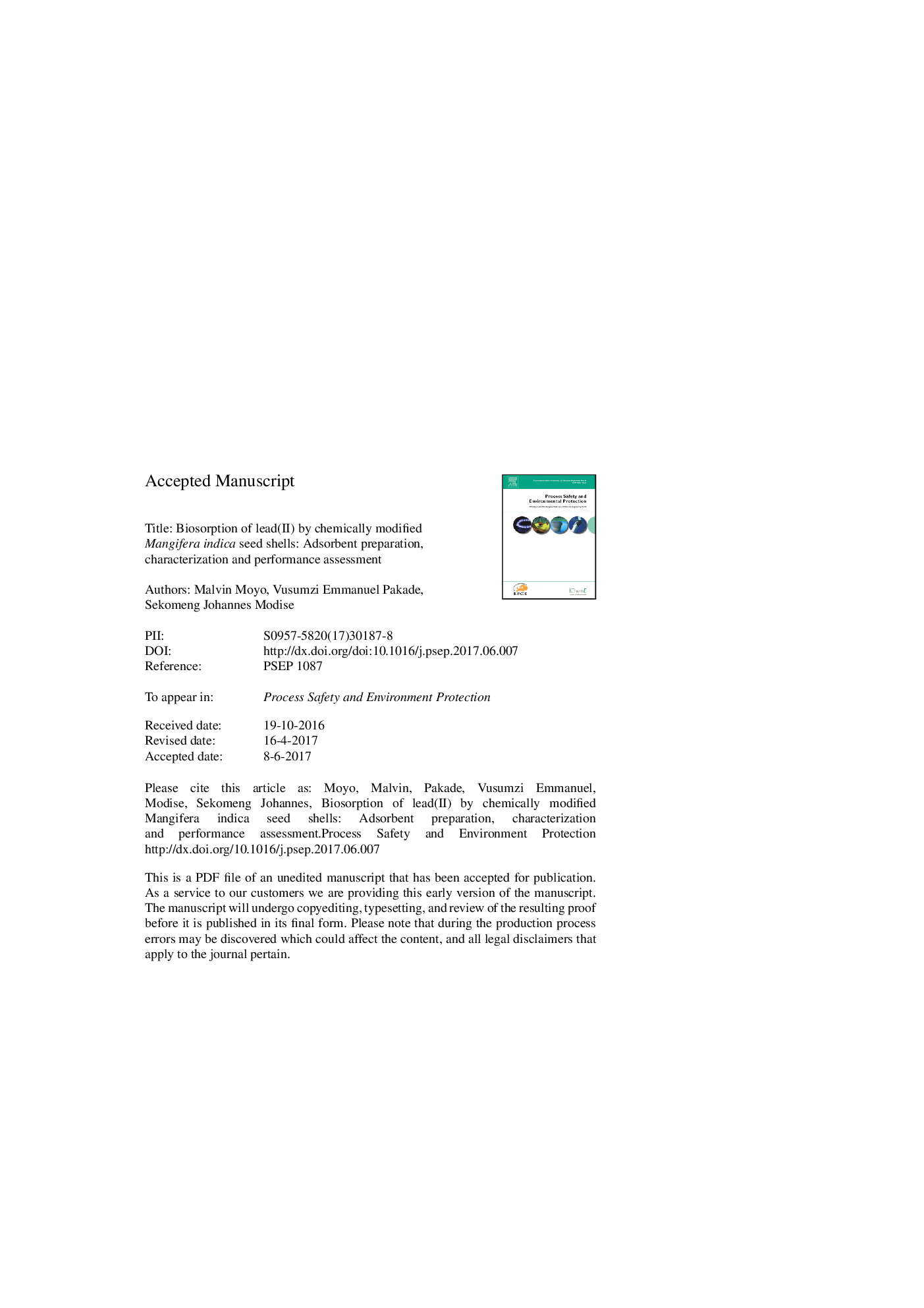| کد مقاله | کد نشریه | سال انتشار | مقاله انگلیسی | نسخه تمام متن |
|---|---|---|---|---|
| 4980638 | 1453329 | 2017 | 37 صفحه PDF | دانلود رایگان |
عنوان انگلیسی مقاله ISI
Biosorption of lead(II) by chemically modified Mangifera indica seed shells: Adsorbent preparation, characterization and performance assessment
دانلود مقاله + سفارش ترجمه
دانلود مقاله ISI انگلیسی
رایگان برای ایرانیان
کلمات کلیدی
موضوعات مرتبط
مهندسی و علوم پایه
مهندسی شیمی
بهداشت و امنیت شیمی
پیش نمایش صفحه اول مقاله

چکیده انگلیسی
In the wake of rising demand for water as well as widespread unavailability of resources for employment of conventional water treatment techniques, the use of adsorption involving agricultural waste derived biosorbents has become a desired alternative. However, in their natural state, these agro-biosorbents exhibit low sorption capacity thereby raising the need for physical and/or chemical modification for improvement. Mangifera indica (mango) seed shell powder was modified by treatment with sodium hydroxide solution followed by surface functionalization with ethylenediaminetetraacetic (EDTA) dianhydride. The natural and modified mango materials were characterized by Fourier transform infra-red spectroscopy (FTIR), elemental, thermogravimetric and X-ray diffraction analysis. The performance of the carboxyl functionalized mango biosorbent (CFMS) was tested against that of the alkali treated mango biosorbent (ATMS) for removal of lead(II) ions from aqueous solutions through batch adsorption experiments. Binding mechanism elucidation through FTIR and thermogravimetric analysis demonstrated chelation by the grafted EDTA ligands. The effects of contact time and initial lead(II) ion concentration were evaluated. The Langmuir, Freundlich and Dubinin-Radushkevich models were used to study the adsorption isotherms while the pseudo-first order, pseudo-second order, Elovich, Bangham's and intra-particle diffusion models were used for the simulation of sorption kinetics. The isotherms were best simulated by the Langmuir model and the adsorption capacity of ATMS was 59.25 mg gâ1 whereas that of CFMS was 306.33 mg gâ1. Sorption kinetics were well simulated by the pseudo-second order model.
ناشر
Database: Elsevier - ScienceDirect (ساینس دایرکت)
Journal: Process Safety and Environmental Protection - Volume 111, October 2017, Pages 40-51
Journal: Process Safety and Environmental Protection - Volume 111, October 2017, Pages 40-51
نویسندگان
Malvin Moyo, Vusumzi Emmanuel Pakade, Sekomeng Johannes Modise,